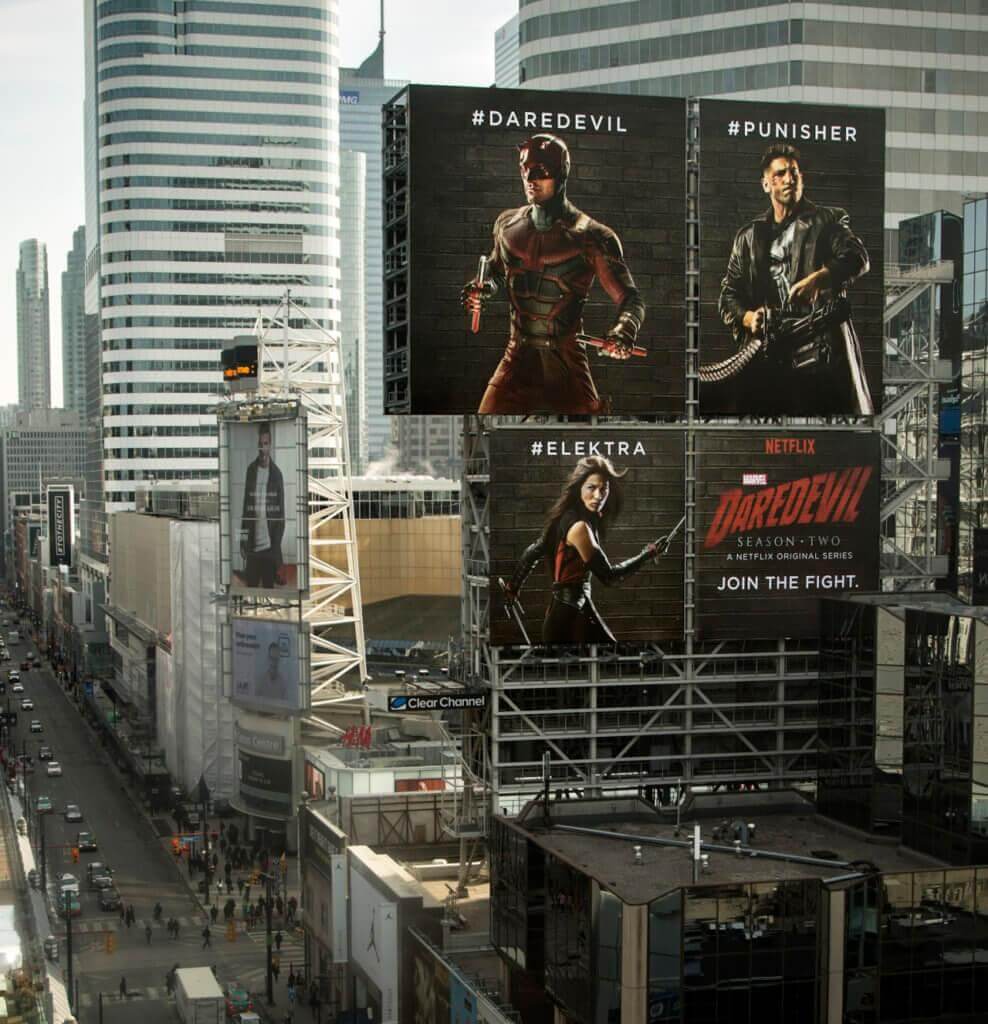
With the growing popularity of digital technology, it may seem that the most logical strategy for advertisers is to invest in online and social media. However, many major brands, such as Bumble, Modsy, and Casper have gone along a slightly different advertising journey with out-of-home (OOH) – advertising, and were followed by great success. With the help of nearly 500 OOH ads, the location-based social app Bumble launched a campaign that racked up 15 million media impressions and reached over 5.5 million people on twitter. While it may seem unusual – and even counterintuitive – recent studies have shown that investing in traditional media like OOH, rather than online advertising, is far more effective in boosting online activity.
OOH increases online activity
A recent study done by Nielsen for the OAAA found that in one month, roughly 90% of U.S residents aged 16 or older notice some form of OOH advertising every month, and an average of 81% of the same audience engage with the messaging. After seeing OOH ads, around two-thirds of smartphone users participate in a post-impression action, with the most common activity being an online search for information regarding the advertiser at 42%. Other notable statistics in the study include 32% of smartphone users visiting the advertiser’s website, and 21% downloading or using an app being advertised.
Digital Advertising
Many statistics suggest that the digital advertising industry is slowing down. The Internet Advertising Revenue Report has documented a $30 million decrease in revenue from the second half of 2018 to the first half of 2019. Such decline hasn’t been seen since 2009. However, this is no surprise if we think of the market saturation that digital platforms have experienced in recent years. Nowadays, Internet users are becoming more savvy with ad blocking software, which means online advertising is no longer as effective. According to Invesp, only 8% of Internet users account for the 85% of clicks on display ads. The average consumer is served over 1700 banner ads per month, but only half of them are actually viewed. Additional studies done by Statista show that, while social ad impressions are up 20% year over year, click through rates are down 30% from 2.6% in late 2018 to 2% in late 2019.
As the online advertising landscape becomes increasingly crowded, advertisers are finding it to be more difficult than ever to draw the attention of potential buyers. This is where leveraging the power of OOH in an omnichannel marketing strategy becomes significantly advantageous.
How to integrate OOH into a multimedia ad campaign

By combining digital and OOH advertising channels, brands can expand and diversify their reach substantially. Small businesses and startups especially have a hard time competing with larger brands when it comes to search engine results page (SERP) visibility. OOH advertising can be an affordable way for businesses to build their digital presence and penetrate into the market. Smartphone users are 17% more likely to engage with a brand after exposure to an OOH ad first, while the most effective OOH ads are capable of driving up to a 38% increase in mobile engagement. Another study done by Nielsen found that 38% of U.S adults visited a Facebook page or posted a message on Facebook after seeing an OOH ad. Similarly, platforms such as Twitter and Instagram have also shown growth compared to 2013. In the span of six months, 23% of U.S adults have posted a message to Twitter, and 25% to Instagram after seeing an OOH advertisement.
Netflix’s Daredevil campaign demonstrates the effectiveness of integrating OOH with online. Netflix designed a billboard and encouraged viewers to use #Daredevil, #Elektra, or #Punisher to support different characters in a 2016 series. Not only did the hashtags trend on Twitter, but the campaign also generated a lot of buzz among both social media and web communities.
Mobile retargeting is a game changer
What is mobile retargeting? Mobile retargeting is an advertising method aimed at those who have previously shown interest in the advertised company. It is a strategic marketing tool in giving companies a chance to return potential clients, thus increasing brand awareness. New technology has been able to apply mobile retargeting in conjunction with OOH advertising through the use of geofencing and geo-location data. Companies are made aware of mobile phones that come in proximity with an OOH ad, and can choose to prompt ads to those who match their demographic. Studies shared by Campaign show that when used together, mobile click-through rates increase by up to 15%, and Ocean Outdoor & Neuro-Insight found 48% of people are more likely to click a digital ad after viewing the same OOH ad. This integrated strategy has been implemented by numerous companies followed by incredible success.
Conclusion
As the online advertising industry becomes more saturated, finding new ways to boost your digital presence and stand out amongst competitors becomes increasingly more important. Based on data from multiple case studies, and the outlook of future trends, it’s safe to say that OOH advertising is the new way to rise to the top.


